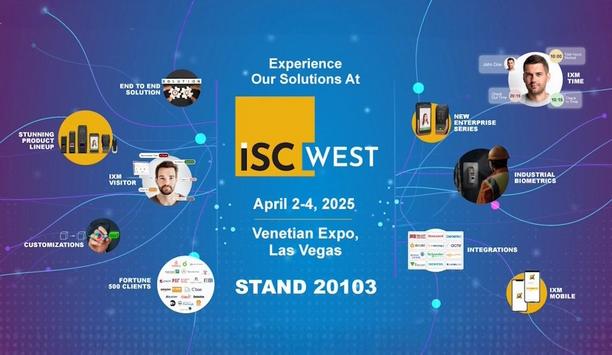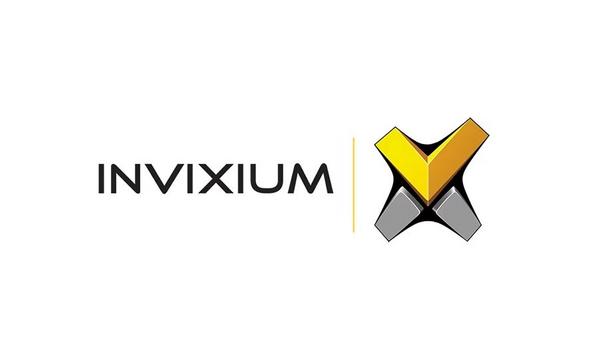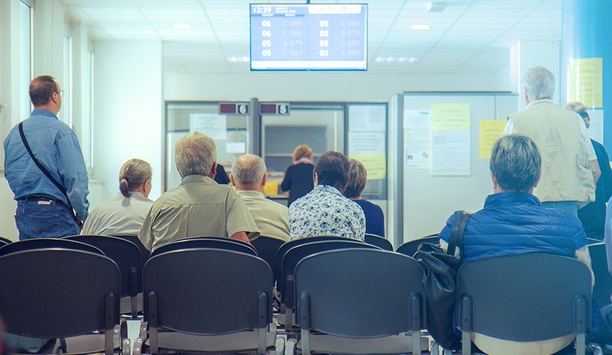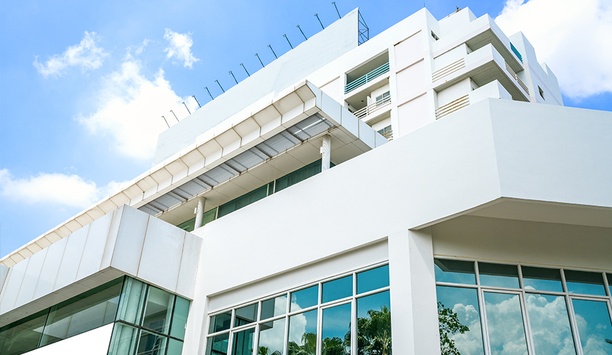Galaxy Control Systems - Experts & Thought Leaders
Latest Galaxy Control Systems news & announcements
Invixium, a pioneer in biometric access control, workforce, and visitor management, along with RTLS-connected worker solutions, is set to exhibit its latest Enterprise Series biometric solutions at ISC WEST. Making its entry into the North American market is Invixium’s effectively priced IXM ROSTO (face + card) and IXM TOUCH 3 (finger + card). These new products are purposely designed with relevant features for the Small-to-Medium Business (SMB) market. Invixium end-to-end solutions In addition, Invixium will also showcase its trusted portfolio of end-to-end solutions for heavy industries and critical infrastructure. “There’s never been a more exciting time to visit Invixium at ISC WEST,” said Shiraz Kapadia, CEO & President of Invixium. “We have achieved tremendous success in the industrial sector, and with the launch of the Enterprise Series, our goal is to deliver high-performance yet economical biometric solutions for the SMB market.” ROSTO features Enterprise Series solutions are sleek and versatile biometric devices designed for fast access control The Enterprise Series solutions, IXM ROSTO and IXM TOUCH 3, are sleek and versatile biometric devices designed for fast and secure access control, workforce, and visitor management. ROSTO features dual cameras for fast face recognition and a 5″ IPS LCD touchscreen for a clear and user-friendly interface. Equipped with a large 1:50K user capacity and Wiegand and OSDP connectivity to pioneering Access Control Panels, it also supports RFID, mobile, and QR code credentials, providing versatile authentication options. Invixium’s flagship solution TOUCH 3 is the newest member of the best-selling TOUCH series, offering advanced fingerprint authentication. It features a vibrant and responsive 3.5″ IPS LCD touchscreen, providing a clear and user-friendly interface for easy interaction. Equipped with an FBI-certified 500dpi optical fingerprint sensor, TOUCH 3 ensures precise and secure authentication. Attendees can also experience IXM TITAN 2nd Generation, now faster than ever, with an exceptional speed and high throughput of 28 faces per minute. Celebrated as Invixium’s flagship solution, TITAN is NDAA-compliant and specifically designed to withstand the toughest industrial and critical infrastructure environments. Invixium’s RTLS-connected worker solution Another highlight will be Triax, Invixium’s RTLS-connected worker solution Another highlight will be Triax, Invixium’s RTLS-connected worker solution. This innovative, easy-to-deploy solution features a patented and scalable mesh network, compact hardware, and actionable dashboards that identify and eliminate productivity pinch points. It enhances site safety, reduces muster times, tracks equipment usage, and triggers alerts for worker-generated injuries, delivering significant labour savings and maximising ROI. Invixium’s solutions at Stand 20103 Visitors will have the opportunity to experience live demos of Invixium’s solutions at Stand 20103. Thanks to strategic partnerships and seamless integrations with esteemed technology partners, their solutions will also be exhibited at Genetec – Stand 13062, Galaxy Control Systems – Stand 3077, and Honeywell – Stand 18059.
Invixium, a global pioneer in biometric access control, workforce, and visitor management along with RTLS-connected worker solutions announces an enhanced integration of their software platform, IXM WEB 3.0 with System Galaxy software v11.8.5. This integration offers a seamless connection between the two systems, enabling seamless data exchange and providing a scalable, unified platform to manage access control information. Range of access control Dealers of Galaxy Control Systems will be able to purchase all Invixium products For ease, dealers of Galaxy Control Systems will be able to purchase all Invixium products, including the all-new Enterprise Series – IXM ROSTO (face + card) and IXM TOUCH 3 (finger + card) directly from Galaxy Control Systems. “Galaxy Control is a valued long-term partner and reseller and we are excited to announce this enhanced integration,” said Shiraz Kapadia, CEO & President at Invixium. “Our longstanding and trusted partnership with Galaxy ensures that integrators and end users can rely on this solution to deliver continual innovation, quality, and value for a wide range of access control needs.” Uncompromised performance and scalability “Demand for high-performance access control solutions is on the rise, and this integration offers our customers with uncompromised performance and scalability,” said Rick Caruthers, President at Galaxy Control Systems. “This collaboration brings together the strengths of both systems, delivering enhanced functionality that supports the growing customer base.” Security management solution System Galaxy software is a complete access control and security management solution System Galaxy software is a complete access control and security management solution. This upgraded integration enables auto-face enrolment, eliminating the need for tedious manual processes. With this feature, users who have a picture on their profile will be automatically enrolled, significantly reducing setup times. This integration also enables efficient identity management, individualised identity-based door access, and the ability to generate specific reports for each screen view or credential holder. Galaxy Control Systems’ cloud software Invixium’s biometric solutions seamlessly integrate with Galaxy Control Systems’ cloud software, delivering a flexible, scalable, and complete solution for customers. Galaxy Control Systems is an authorised value-added distributor of Invixium biometric solutions.
Invixium, a global pioneer in biometric access control and workforce management solutions, announces its participation at ISC West 2024. At the show, Invixium will exhibit its full line of NDAA-compliant, made-in-Canada, modern, and rugged biometric solutions that are specifically designed to thrive in the most unclean, hazardous, extreme, and harsh working conditions prevalent in the industrial and critical infrastructure sectors. Addressing security challenges As an integrated biometric solutions provider, Invixium has earned a global reputation for its adeptness in swiftly addressing real-world security and productivity challenges faced by its customers distinguishing itself from other players in the physical access control industry who often engage in product features and data sheet wars. “Approximately, 75% of the working population work in harsh and non-clean industries," said Shiraz Kapadia, CEO & President at Invixium. Biometric products and software Shiraz Kapadia continues, "Our biometric products and software are purposely engineered to operate in such environments where it’s needed the most." “With 35,000 devices deployed across the toughest sites with large workforces, we’re safeguarding refineries, airports, manufacturing plants, data centres, construction sites, and critical infrastructure,” added Kapadia, enforcing the breadth of Invixium’s impact. IXM WEB 3.0 IXM WEB 3.0 adds IXM VISITOR streamlining guest security with fast, paperless registration options Attendees at the show can experience Invixium’s new all-in-one software platform, IXM WEB 3.0. With advanced layered encryption at its core for data protection, it offers a revamped UI/UX, powerful analytics, and enterprise-grade visitor management. In addition to IXM TIME – A comprehensive workforce management module, IXM LINK – Integration to the industry’s best access control software, IXM WEB 3.0 adds IXM VISITOR as part of this platform, streamlining guest security with fast, paperless registration options and a customisable dashboard. TITAN Complementing its top-tier software would be TITAN, the most rugged face recognition access control solution equipped with multi-factor authentication purpose-built for harsh industries, TFACE, a highly versatile and slim dual biometric device for enterprises, and others. Invixium’s software makes it easier for system integrators to implement biometric solutions quickly and accurately; significantly speeding up deployment and setup time. The company has established a long list of integration partners including LenelS2, Genetec, Honeywell, ACRE Security (DNA Fusion, Feenics, and AccessIt!), Galaxy Control Systems, Gallagher, Paxton, Nedap, Siemens, Schneider Electric, and more. Custom-made approach Invixium advocates that a one-size-fits-all approach does not work when it comes to security solutions. Recognising the inherent diversity across industries, Invixium champions a non-traditional, unique, custom-made approach, understanding that the security needs of a convenience store diverge greatly from those of an oil and gas facility. Invixium’s solutions attend to the distinct requirements of critical infrastructure sectors, including oil and gas, data centres, correctional facilities, research labs, pharmaceuticals, airports, higher education, and manufacturing. Within these verticals, safety and security are indisputably a non-negotiable priority. Attendees will be able to engage in live demos and discuss their project requirements with Invixium’s team of biometric experts at booth #23103.
Insights & Opinions from thought leaders at Galaxy Control Systems
Video, access control and visitor management are among the technologies that are enabling greater safety and security at hospitals and other healthcare facilities. Video surveillance systems enable hospital management and security professionals to know what goes on in and around a medical facility. Recording images in high resolutions (megapixels and gigapixels) is becoming more and more important in healthcare, says Jason Ouellette, Product Line Director – Access Control, Tyco Security Products. Video event management software Video analytics are now being leveraged for patient tracking, asset tracking, and operational purposes If an incident occurs in a medical facility, the security staff has to be able to identify faces easily and accurately. Storage and costs have to be considered, of course. With technology improving and prices decreasing, video solutions can even be used for purposes beyond traditional security. For example, video analytics are now being leveraged for patient tracking, asset tracking, and operational purposes, and captured video can be used to defend against liability claims. What’s next? Video analytics will continue to be a valuable addition to any surveillance infrastructure due to its ability to address patient needs, operational efficiencies and early risk detection, says Brandon Reich, Senior Director of Surveillance Solutions, Pivot3. Through video event management software (VEMS), hospitals can customise the statistics that are relevant to their individual buildings or campuses without having to spend extra time or money on rigorous employee training. Data capture form to appear here! Real-time access control security updates Furthermore, once healthcare facilities are able to digitise all of their patient records, secure any of their ingress and egress points with real-time access control security updates, and fully transition from analogue to IP video surveillance cameras, VEMS systems that house analytical software will be able to multiply the benefits offered to hospitals, not just in real time, but in planning ahead for future risk, expansion and safety protocols. It is vital to implement integrated and innovative access control solutions With large, complex facilities, directors of security at hospitals struggle with controlling access to various levels of the facility, according to Eric Widlitz of Vanderbilt Industries. To manage the risks that hospitals face and ensure a comprehensively protected atmosphere for patients and staff, it is vital to implement integrated and innovative access control solutions. For example, ease of access with controlled entrances is vital to medical crash teams, as is the need for a zonal access control lockdown in the event of a contagious disease outbreak. Strict access limitations Different hallways, rooms, floors and waiting areas within a hospital require different amounts of restriction, and sensitive materials, such as medical files, controlled substances and sterile environments (such as operating and procedure rooms) all necessitate an additional layer of protection. Access control in particular has advanced significantly to offer healthcare facilities the ability to control access remotely, through mobile applications, confirm identity quickly and easily and program varying levels of access for visitors, patients, doctors and staff. One area that is recently experiencing rapid growth – and drastic change – is the securing of narcotics within healthcare facilities, says Robert Laughlin, CEO and Chairman, Galaxy Control Systems. In the past, all medicine was controlled in a central pharmacy located somewhere in the hospital or health facility. These pharmacies were highly secured areas, with strict access limitations; only authorised staff could get near the medicine stocks. Fiber optic communication lines For vehicle access control, medical centers and hospitals prefer beam barricades and shallow foundation barriers To improve the speed of delivery, and to have the necessary medicines ready at hand for in-patients without retaining a large delivery staff, the current trend is to have distributed pharmaceutical closets or carts that hold medicines much closer to the intended patients. For vehicle access control, medical centers and hospitals prefer beam barricades and shallow foundation barriers, according to Gregg Hamm of Delta Scientific. Manual beam barricades are installed at the Fort Bragg Veterans Administration Hospital in North Carolina to shut down certain areas of the facility when a higher alert is sounded. They will stop a 15,000-pound vehicle traveling 50 mph. The Navy Hospital in San Diego uses high speed, high security and very shallow foundation barricades to control all vehicles going in and out of the facility. With their extremely shallow foundation, they obviate the concerns of interference with buried pipes, power lines and fiber optic communication lines. They will stop a 15,000-pound vehicle traveling 50 mph. At the National Institute of Health in Bethesda, Maryland, even stronger shallow foundation barriers are used for traffic control and protection. These barriers will destroy a 65,000-pound (5.4 million foot-pounds) dump truck traveling 50 mph and continue to stand. Physical access control systems Controlling visitors to hospitals and healthcare facilities can directly impact security Controlling visitors to hospitals and healthcare facilities can directly impact security. Traditional methods of visitor management, such as paper visitor logs and handwritten badges are insufficient given today’s variety of security challenges. A hospital using paper-based systems cannot easily cross-check information, confirm patient information, check visitor names against up-to-date watch lists, or visually confirm identity. An increasingly popular and important application is secure and simplified visitor management, integrated with the physical access control systems (PACS). Today’s visitor management systems enable the screening, badging and tracking all visitors or, at a minimum, those visiting critical areas or during ‘after hours’ periods, Quickly identify inappropriate visitors One other growing technology is the ability to link to internal or governmental watch lists, to quickly identify inappropriate visitors before they gain access to the facilities. For example, Visitor Management systems can be configured to perform a Sex Offender search in both Children’s Hospitals and Pediatric areas, further decreasing the likelihood that someone of the list could gain access. Wayfinding is indoor navigation to guide a person step-by-step on the way to a desired destination HID Global and Phunware Inc. are addressing the need of healthcare institutions to deploy standardised technology to provide a better wayfinding and visitor engagement experience inside the hospital, across campus and even in parking lots. The companies are collaborating to improve the experience for hospital patients and visitors to find their way within medical facilities, using wayfinding on their mobile phones. Wayfinding is indoor navigation to guide a person step-by-step on the way to a desired destination. Enterprise-level mobile wayfinding “It’s easy for visitors and patients to get lost in hospitals, and every time they do it puts appointment times and patient satisfaction at risk,” says Rom Eizenberg, Vice President of Sales, Bluvision, part of HID Global “With our location-aware app on a mobile device, we equip the visitor to get instant, turn-by-turn navigation that creates a better experience than that which is currently available on the market.” HID’s healthcare IoT solution-enablement platform simplifies the delivery of real-time location of clinicians, patients and devices. The platform is enabled by Bluvision (part of HID Global). Phunware’s Multiscreen-as-a-Service (MaaS) platform also provides enterprise-level mobile wayfinding, engagement, data and more for other vertical markets, including retail, residential, hospitality, media and entertainment and more. Missed the rest our healthcare mini series? Read part one here and part two here.
The healthcare market is rife with opportunity for security systems integrators. Hospitals have a continuous need for security, to update their systems, to make repairs, says David Alessandrini, Vice President, Pasek Corp., a systems integrator. “It’s cyclical. Funding for large projects might span one to two years, and then they go into a maintenance mode. Departments are changing constantly, and they need us to maintain the equipment to make sure it’s operating to its full potential.” The experience of Pasek Corp. is typical of the opportunities available for security integrator companies in the healthcare vertical. A single large hospital system can supply a dependable ongoing source of revenue to integrator companies, says Alessandrini. Hospitals are “usually large enough to provide enough work for several people for an extended length of time.” Healthcare customers in Pasek’s service area around Boston provide the potential for plenty of work. “We have four major hospitals, each with in excess of 250 card readers and 200 cameras, in the Boston area,” Alessandrini says. One appeal of the healthcare market for North Carolina Sound, an integrator covering central North Carolina, is the breadth of possible equipment they can sell into the healthcare market, including access control and video, of course, but also other technologies, such as audio-video systems in a dining room. North Carolina Sound has also installed sound masking in some areas with waiting rooms to protect private patient information from being overheard. Locking systems on pharmaceutical doors are another opportunity. Data capture form to appear here! IP based networked video systems A facility’s IT folks must be convinced an IP solution will function seamlessly on their network Among North Carolina Sound’s customers is Wayne Memorial Hospital, Goldsboro, N.C., which uses about 340 video cameras, with 80 percent or more of them converted to IP. The hospital is replacing analogue with IP cameras as budget allows, building network infrastructure to support the system. The healthcare market tends to have a long sales cycle; in general, sales don’t happen overnight or even within a month or two. In fact, the period between an initial meeting with a healthcare facility and installation of a system could stretch to a year or longer. A lot happens during that time. Healthcare systems involve extensive planning, engineering, and meetings among various departments. Physical security systems that involve the information technology (IT) department, as do most systems today, can be especially complex. Installation of networked video systems based on Internet protocol (IP) requires deep and probing discussions with the IT team about how a system fits into the facility’s network infrastructure. A facility’s IT folks must be convinced an IP solution will function seamlessly on their network. Compatible with the network They must vet the technology to ensure the devices and solutions will be compatible with the network, and must sign off on technology choices. And even more important is determining if the security system will adhere to cyber security requirements of the facility. A complete solution that integrates nearly any system that lives on or uses a facility’s network is ultimately what the healthcare vertical is moving toward, says Jason Ouellette, General Manager – Enterprise Access Control & Video, Johnson Controls. Healthcare security professionals are early adopters of technology, implementing the best technology available” “We are hearing more and more from customers across industries that they want to be able to use their security systems and devices for more than just security: they want added value,” says Ouellette. Many want to use access control, video surveillance and other data sources to assess their business operations and/or workflows with the goal of improving efficiency. Upgrade cost-effectively Historically, three factors have prevented many organisations from moving forward with new technologies: lack of money, proprietary systems, and the need to “rip and replace” large parts of the installed systems, says Robert Laughlin, CEO and Chairman, Galaxy Control Systems. "Today, while funding is almost always a limiting factor at some level, the progression of industry standards and ‘open’ systems has made a big positive impact on the ability of organisations to upgrade cost-effectively,” he says. Despite any obstacles, healthcare customers generally welcome new innovations. “I would say healthcare security professionals in general are early adopters of technology and like to implement the best technology available,” says Jim Stankevich, Global Manager – Healthcare Security, Johnson Controls/Tyco Security Products. “For most, rapid implementation is limited by budgets and available funding." Read parts one and three of our heathcare mini series here and here.
How much does a security system cost? We all know that total costs associated with systems are substantially higher than the “price tag.” There are many elements, tangible and intangible, that contribute to the costs of owning and operating a system. Taking a broad view and finding ways to measure these additional costs enables integrators and users to get the most value from a system at the lowest total cost of ownership (TCO). However, measuring TCO can be easier said than done. We asked this week’s Expert Panel Roundtable to share the benefit of their collective expertise on the subject. Specifically, we asked: How should integrators and/or end users measure total cost of ownership (TCO) when quantifying the value of security systems?
The ultimate guide to mastering key control
DownloadUsing artificial intelligence (AI) to automate physical security systems
DownloadA modern guide to data loss prevention
Download7 proven solutions for law enforcement key control and asset management
DownloadThe truth behind 9 mobile access myths
Download













